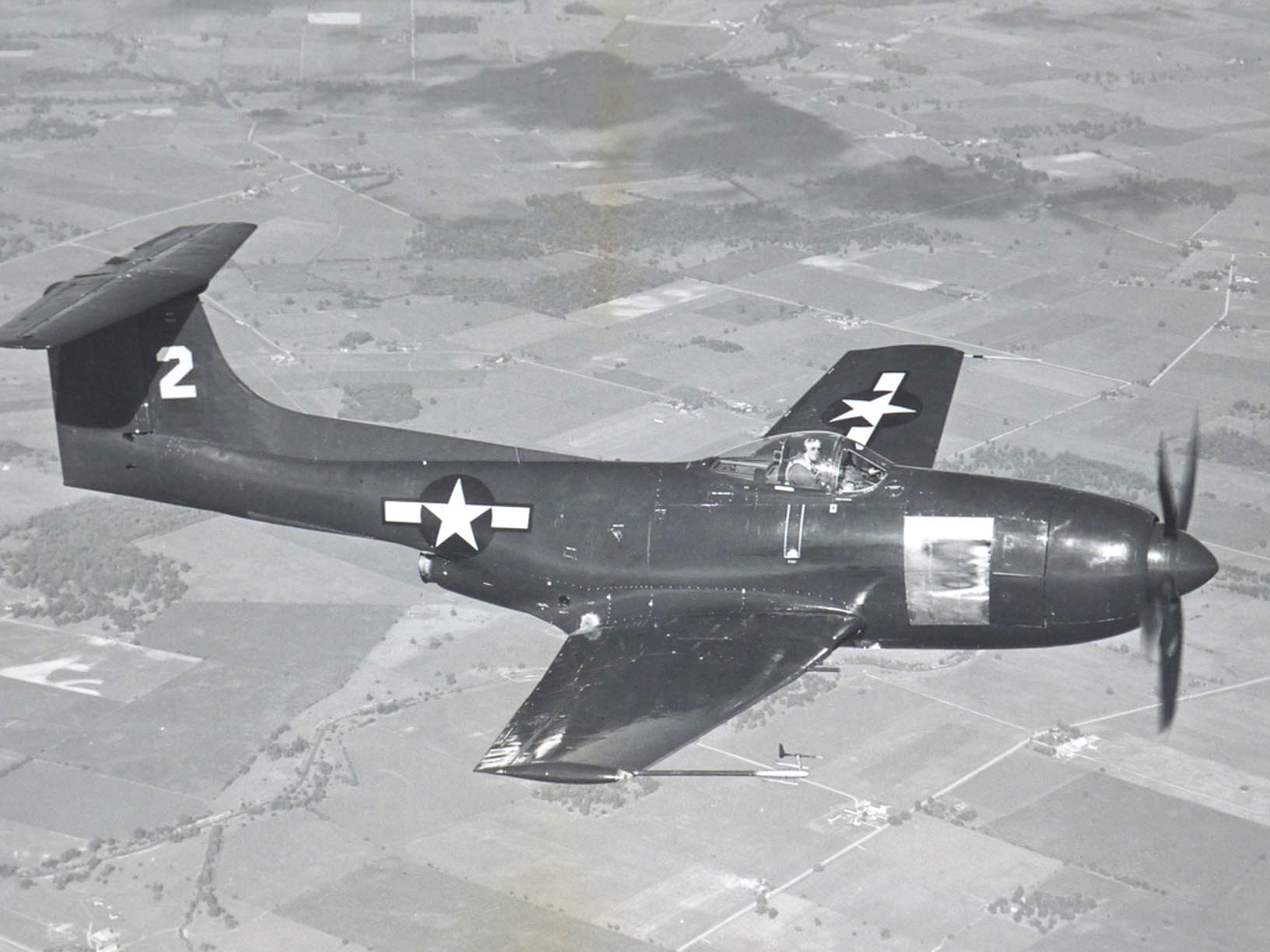Curtiss XF15C-1
Late in World War II piston-engine aircraft reached a peak of performance that even carrier-borne planes could achieve. At the same time, turbojet power had demonstrated its potential, but the earliest jets were unreliable and consumed fuel at a prodigious rate. One short-term transitory means of maintaining a sound military presence in the air was to have the best of both worlds by incorporating both power plants in a single airframe. This seemed particularly attractive to the U.S. Navy, which initially regarded the piston engine’s proven reliability as an essential element in carrier takeoffs and landings. The Navy’s first composite fighter, the Ryan FR-1, first flew in June 1944 and 71 were built. Its 1946 follow-up, the XF2R “Dark Shark,” was less successful, but by then a more established competitor had entered the fray.
In 1943 Curtiss, which had dominated the military aviation scene through most of the 1920s and ’30s, responded to a Navy specification for a fighter combining a 2,100-hp Pratt & Whitney R-2800-34W 18-cylinder twin-row radial engine with an Allis-Chalmers J36 (a license-built de Havilland Goblin turbojet) expected to produce 2,700 pounds of thrust. Curtiss’ design, the Model 99, was accepted for further development by the Navy, which in April 1944 ordered three prototypes under the designation of XF15C.
Curtiss’ composite was a large monoplane, intended for use from the new, larger Midway-class carriers then being built. As with the Ryan designs, the XF15C’s piston engine was up front and the jet engine mounted aft, fed by intakes in the wing roots and exhausting through a port under the fuselage and the conventional tail unit. The cockpit was set well forward for a good view and the airplane featured tricycle landing gear.
The prototype XF15C-1 was 43 feet 8 inches long and had a 48-foot wingspan, though its width was reduced to 20 feet 5 inches with the wings folded. The fighter weighed 12,648 pounds empty and 16,630 pounds loaded.
The XF15C-1 first took to the air on February 27, 1945, using only a 2,400-hp Pratt & Whitney R-2800-22W without the jet. The turbojet was installed in April and flight testing with both engines began in May, but on May 8 the first prototype crashed while on landing approach, killing the pilot. The second prototype began flying on July 9, but as with the previous plane, handling and control issues came up, which Curtiss sought to alleviate by revising the tail. The vertical stabilizer was extended and the horizontal control surfaces mounted atop a T-tailed configuration to isolate them from the jet exhaust. During tests the plane achieved a maximum speed of 469 mph, a ceiling of 41,800 feet, a climb rate of 5,020 feet per minute and a range of 1,385 miles.
At this point, however, the state of turbojet development had been advancing apace and with the viability of jet power alone becoming the clear prospect for future, the Navy lost interest in mixed-power aircraft. Curtiss tried and failed to get the U.S. Army Air Forces to sponsor further development, and in October 1946 the Navy cancelled the XF15C-1 project for good.
One of the prototypes was displayed at the Quonset Air Museum in North Kingstown, R.I., but in March 2014 a snowstorm caused a partial roof collapse that closed the museum. The other XF15C-1 can be seen in the Hickory Museum in Hickory, N.C.

